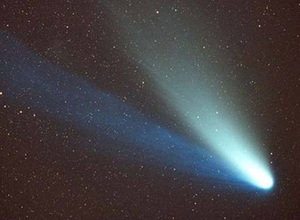In a paper submitted to the Astrophysical Journal Letters, a trio of Hungarian and Australian astronomers describe capturing the most distant cometary activity ever seen.

|
| ©Dennis di Cicco |
| Comet Hale-Bopp amid its glory on March 17, 1997. The comet still shines in the outer solar system, but at a mere 20th magnitude. |
The team imaged Hale-Bopp over three nights last October, when the comet was nearly 26 astronomical units (2.4 billion miles) from the Sun. At 20th magnitude, it wasn't much to look at, just a smudge about a dozen pixels across as captured using the 2.3-meter Australian National University telescope at the Siding Spring Observatory. But the images were enough for the researchers to conclude that the nucleus is still releasing carbon monoxide gas into a coma more than 100,000 miles wide.



Reader Comments
to our Newsletter